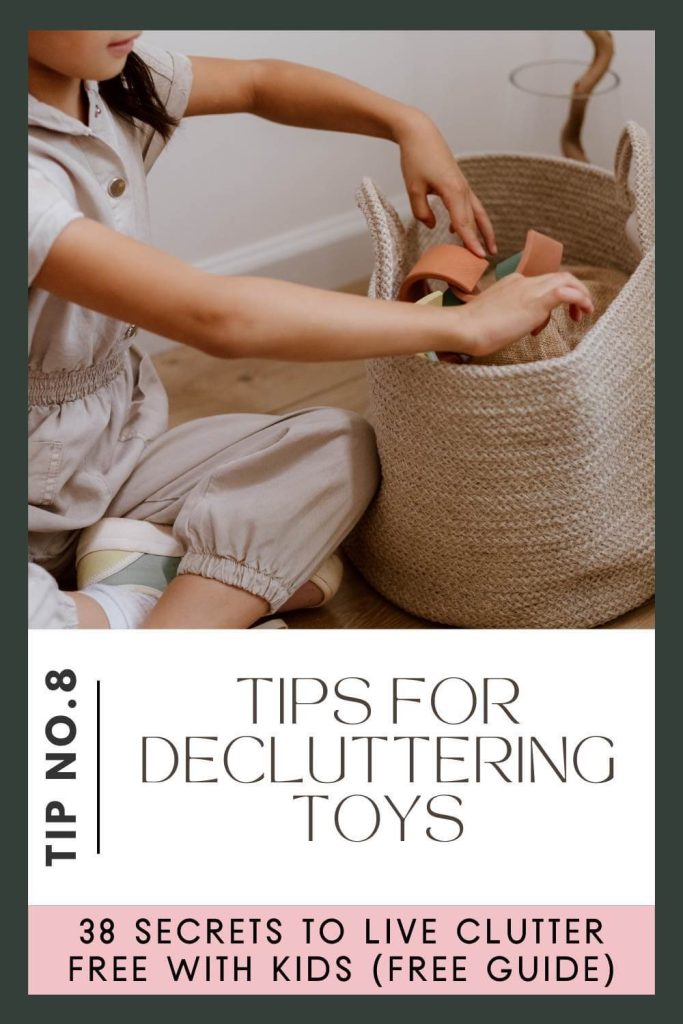Teaching Kids Minimalism Strategies for Organization Skills

Understanding Minimalism in Children’s Lives
In an age where overconsumption and materialism often prevail, instilling the principles of minimalism in children can create a profound shift in their approach to life. Minimalism is not about depriving oneself; rather, it is about making room for what is truly important. By teaching kids to embrace simplicity, we equip them with tools to better manage their belongings and focus on their personal growth.
Benefits of Embracing Minimalism
One of the most significant advantages of a minimalist lifestyle is how it reduces stress. A clutter-free environment promotes calmness and increases mental clarity. For instance, children who have an organized space are less likely to feel overwhelmed by their surroundings. When they sit down to do homework, they can concentrate without being sidetracked by toys or unnecessary clutter.
This leads to another key benefit: boosting focus. Children who own fewer possessions can hone in on their interests and passions without distraction. Consider a young artist who has a small selection of quality art supplies. With a limited but well-chosen collection, they can better engage with their creativity rather than feeling paralyzed by an abundance of choices.
Furthermore, minimalism naturally encourages responsibility. When children learn to care for a select number of items, they develop a sense of ownership and accountability. For example, a child who has a favorite bike will be more inclined to take care of it than if they had several bikes they barely used. This helps instill life skills that are crucial for future success.
Implementing Minimalism in Daily Life
The art of minimalism teaches children to make intentional choices about their belongings. Strategies such as decluttering regularly and prioritizing quality over quantity can empower them to appreciate what they own. In practice, this might involve organizing a seasonal purge where children can donate toys and clothes they no longer use. Such activities foster gratitude for what they have while allowing for a sense of community contribution.

As parents and educators, it is essential to guide children in developing organizational habits that will serve them throughout their lives. Creating designated spaces for belongings and involving children in the organization process can build these skills over time. For example, designating a specific shelf for school supplies and allowing children to organize them supports independence while reinforcing their ability to maintain order.
By integrating minimalism into their routines, children can cultivate an environment that is not only conducive to learning but also promotes personal growth. As we explore actionable strategies for teaching kids the principles of minimalism, we can help them navigate their worlds with clarity and purpose.
CHECK OUT: Click here to explore more
Practical Strategies for Instilling Minimalism
Teaching children about minimalism goes beyond just decluttering their space; it involves fostering a mindset that values simplicity and intentionality. In a world where advertisements constantly promote the latest toys and gadgets, it’s crucial to equip kids with the ability to discern what truly matters. Here are some practical strategies to help children embrace minimalism effectively:
Start with Decluttering
The foundation of minimalism often begins with a thorough decluttering session. Involve your kids in this process to make it a meaningful experience. Here are a few steps to consider:
- Set a date: Choose a weekend or a day off to dedicate to decluttering. Mark it on your calendar as a special “minimalism day.”
- Make it fun: Turn decluttering into a game by setting up contests to see who can donate the most items or who can find items that haven’t been used in a year.
- Follow the one-in-one-out rule: Teach kids that for every new item they bring into the house, they must let go of an existing one. This rule helps manage accumulation.
By establishing a decluttering habit, children learn to evaluate their belongings critically, fostering an appreciation for the things they choose to keep.
Quality Over Quantity
Another essential principle of minimalism is prioritizing quality over quantity. This can be a valuable lesson for children, especially in a consumer-driven society. Teach them how to select items based on their durability and personal significance rather than merely for their novelty or trendiness. For instance:
- Encourage kids to save their allowance for a high-quality toy that they truly desire rather than rushing to buy several cheaper items.
- Discuss the importance of well-made clothing and shoes that will last longer, reducing the need for frequent replacements.
By recognizing the value of investing in fewer, high-quality items, children develop a sense of gratitude for what they own, which contributes to a more mindful approach to consumption.
Designate Functional Spaces
Creating a functional environment is a key aspect of organizational skills. Help children establish specific areas for their various belongings, promoting a sense of order and ease. Consider the following:
- Use bins and labels: Introduce labeled bins for toys, art supplies, and books. Allow children to decorate these bins or choose the labels, enhancing their personal connection to the organization.
- Involve kids in the process: Let children decide where they want their items to be kept, giving them ownership of their space.
By creating designated spaces, children learn that organization stems from making deliberate choices about where things belong, instilling essential skills that they can carry forth into adulthood.
As we delve deeper into the relationship between minimalism and organizational skills, one can see how these practices offer not only clarity in their physical environment but also foster a sense of empowerment and responsibility for children.
| Category | Key Features |
|---|---|
| Decluttering Techniques | Instructing children on sorting their belongings into categories of keep, donate, or discard fosters essential decision-making skills. |
| Time Management | Using timers for short tasks can help children learn to prioritize their activities, thus enhancing their overall organization skills. |
Minimalism teaches kids the valuable lesson of evaluating their possessions and deciding what truly matters. By introducing decluttering techniques, children can understand that less can often mean more in terms of mental space and focus. This process not only simplifies their environment but also reduces stress and anxiety levels linked to clutter.Incorporating time management skills into their daily routine, such as during homework or chores, instills a sense of accomplishment. Simple practices, like setting a timer for focused activities, allow children to see the benefits of staying organized, paving the way for enhanced productivity in future endeavors. Emphasizing these strategies will ultimately equip children with lifelong skills that contribute to their overall well-being.
CHECK OUT: Click here to explore more
Encouraging a Mindful Approach to Consumerism
To truly instill the principles of minimalism in children, it is essential to cultivate a mindful approach to consumerism. This involves teaching them to think critically about their needs versus their wants, allowing them to navigate the world of advertisements and peer pressure more effectively. Here are some strategies to promote this idea:
Introduce the Concept of Needs vs. Wants
Understanding the difference between needs and wants is fundamental in our consumer-driven society. Start by engaging your children in discussions that clarify these concepts:
- Daily reflection: Set aside time each week to evaluate what they truly value. Ask them to list items they needed for school or hobbies and those they wanted but did not necessarily need. This practice encourages critical thinking about their choices.
- Use real-life examples: When shopping, explain the distinction between needs (like food and clothing) and wants (like a new video game). This can help children contextualize their experiences and reinforce the lessons learned.
By honing their ability to distinguish between needs and wants, children develop a key skill that promotes responsible decision-making and reduces impulsive purchases.
Implement a Wish List System
A practical way to manage desires is by creating a wish list system. This simple yet effective technique can help children process their wants more thoughtfully:
- Encourage patience: Whenever your child expresses a wish for a new item, suggest they add it to their wish list rather than buying it immediately. Set a waiting period—like a month—to see if they still want the item.
- Review and reflect: After the waiting period, revisit the list together. Discuss which items are still desired and which can be crossed off. This helps children recognize fleeting desires versus genuine interests.
This practice fosters patience and reduces impulsive buying behavior while ultimately allowing them to make more informed choices.
Teach the Value of Experiences Over Things
Children often find more joy in experiences than material possessions. Encouraging a mindset that privileges experiences can significantly reduce their desire for clutter. Here are some approaches:
- Family experiences: Organize family outings—be it a picnic, a visit to a museum, or a hike in nature—where the focus is on creating memories rather than collecting items.
- Gift alternatives: When birthdays or holidays approach, suggest to family and friends that they consider giving experiences as gifts, such as tickets to a concert or a gift card for a fun activity, rather than traditional toys.
By placing importance on experiences, children can cultivate appreciation for life’s moments, shifting their focus away from material goods and towards fulfilling interactions.
These purposeful strategies not only enhance children’s organizational skills but also serve as essential life lessons that encourage intentional living. The act of cultivating mindfulness and practicality in what they own lays the groundwork for a more organized, satisfying life, well beyond their childhood years.
SEE ALSO: Click here to read another article
Conclusion: Fostering Life Skills through Minimalism
In an age dominated by consumerism, equipping our children with the tools of minimalism is more crucial than ever. By fostering strategies that delineate needs vs. wants, implementing a practical wish list system, and emphasizing the value of experiences over material possessions, we empower kids to cultivate a sense of organization that transcends mere tidiness. These strategies not only enhance their organizational skills but also establish a foundation for lifelong critical thinking and intentional decision-making.
Moreover, as children learn to navigate their desires, they become adept at resisting societal pressures and advertisements that bombard them daily. This skill set is invaluable in today’s fast-paced world, where instant gratification often overshadows thoughtful choices. Teaching them to appreciate experiences fosters deeper connections with family and friends, shifting their focus from items to invaluable memories.
As parents and educators, it is our responsibility to guide children in developing a mindful approach to how they live and consume. Encouraging young individuals to embrace minimalism can lead to less stress and clutter in their lives, ultimately paving the way for a more organized and fulfilling existence. By investing time in these lessons now, we can nurture a generation that values simplicity, practicality, and meaningful living, making them resilient in the face of an ever-increasingly complex world.



